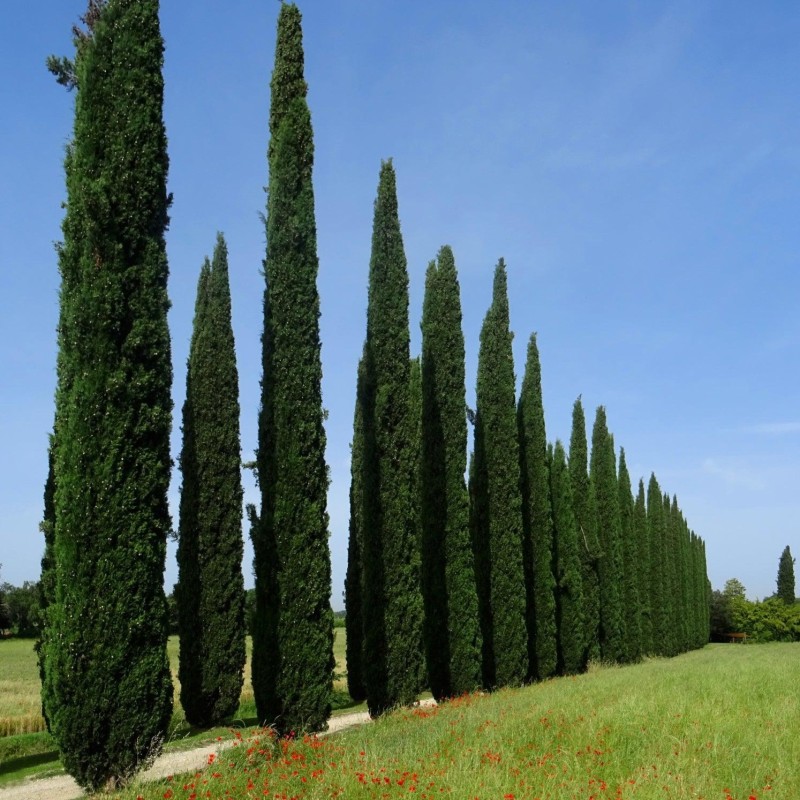Cupressus sempervirens, the Mediterranean cypress (also known as Italian cypress, Tuscan cypress, or Persian cypress), is a species of cypress native to the eastern Mediterranean region and Iran. It is well-adapted to the environmental conditions that it lives in due to its ability to survive in both acidic and alkaline soils and withstand drought. Cupressus sempervirens is important in Mediterranean and Middle Eastern culture, most notably in Iran, where it is both a sacred tree and a metaphor for the graceful figure of the beloved.

